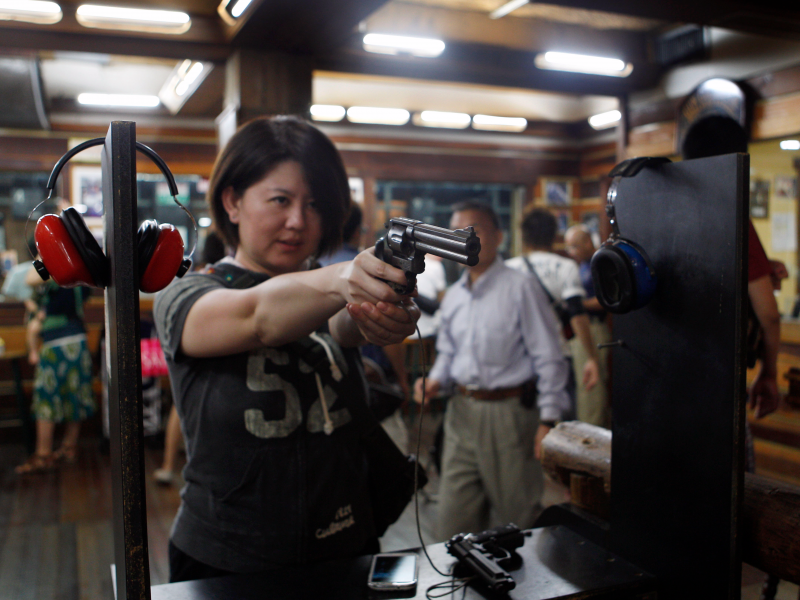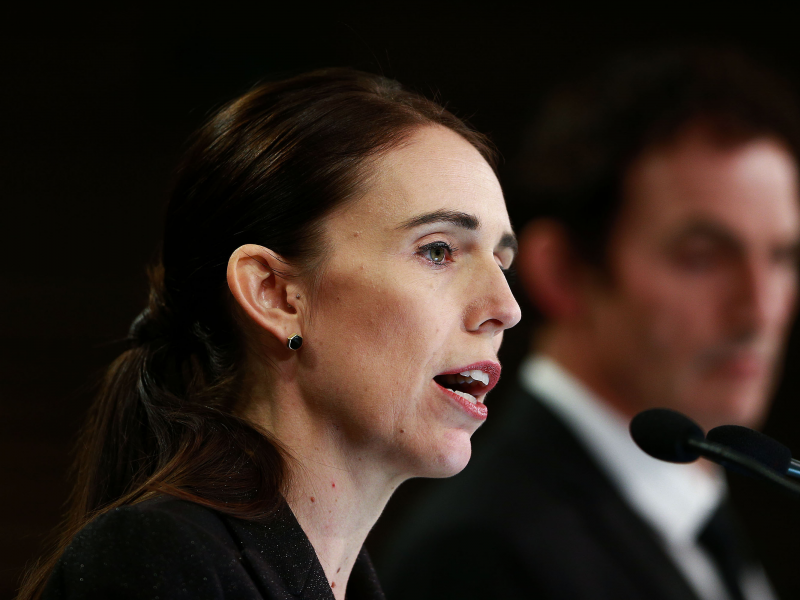- The US has seen 366 mass shootings in the US so far in 2019, continuing debates about gun control.
- Two students were killed in a school shooting in Los Angeles on Thursday. During a single weekend in August, 22 people were killed in a mass shooting at a Walmart in El Paso, Texas and nine people were killed in a mass shooting in Dayton, Ohio.
- Some countries have figured out how to curb gun violence through targeted strategies.
- Efforts in Japan, Australia, New Zealand, Norway, and the United Kingdom may all offer insight.
- Visit Business Insider’s homepage for more stories.
A 16-year-old gunman opened fire at Saugus High School in Santa Clarita, California on Thursday. Two students were killed, and three were injured – all five were between the ages of 14 and 16. The gunman used a .45-caliber semiautomatic pistol, and he also shot and seriously injured himself, according to Captain Kent Wegener of the Los Angeles Country Sheriff’s Department.
There have been 366 mass shootings in the US so far in 2019, meaning there’s been more than one shooting per day, on average.
Two mass shootings occurred in a single weekend in August. A 21-year-old gunman entered a Walmart on August 3 in El Paso, Texas, killing 22 people and injuring 26 more. In Dayton, Ohio, a gunman killed nine people and injured 27 others, just 13 hours later.
As shootings like these continue in the US, so do questions about gun control. Americans who fear their town or city could be the site of the next attack wonder what strategies the US could take to reduce gun violence.
No country has the same political structure or history with firearms as the US, but several have taken steps that have worked for them. Here are some insights from other nations into how gun violence could be reduced:
Australia paid citizens to sell their guns to the government.

A spate of violence in the 1980s and '90s that culminated in a 1996 shooting that left 35 dead led Australian Prime Minister John Howard to convene an assembly to devise gun-control strategies.
The group landed on a massive buyback program, costing hundreds of millions of dollars offset by a one-time tax increase, that bought and destroyed more than 600,000 automatic and semiautomatic weapons and pump-action shotguns.
Over the next few years, gun-death totals were cut nearly in half. Firearm suicides dropped to 0.8 per 100,000 people in 2006 from 2.2 in 1995, while firearm homicides dropped to 0.15 per 100,000 people in 2006 from 0.37 in 1995.
A US buyback would mean destroying more than 40 million guns - but at the state level, the undertaking might not be so massive.
Japan puts citizens through a rigorous set of tests before they can own a gun.

Japan, which has strict laws for obtaining firearms, seldom has more than 10 shooting deaths a year in a population of 127 million people.
If Japanese people want to own a gun, they must attend an all-day class, pass a written test, and achieve at least 95% accuracy during a shooting-range test.
Then they have to pass a mental-health evaluation at a hospital, as well as a background check, in which the government digs into any criminal records or ties and interviews friends and family members.
Finally, they can buy only shotguns and air rifles - no handguns - and must retake the class and the initial exam every three years.
Norway exemplifies the power of social cohesion and trust.

Compared with the US, Norway has about one-third of the number of guns per 100 civilians - and about one-tenth of the rate of gun deaths per 100,000 people.
Sociologists who study the Nordic model have found that social cohesion between citizens and the government goes a long way toward ensuring a (mostly) peaceful society.
For example, an analysis in 2015 found that the number of fatal shootings by police in Norway in the past nine years was less than the number of fatal shootings by US police officers in one day.
Gummi Oddsson, a cross-cultural sociologist from Northern Michigan University, has found that Nordic governments go to great lengths to build trust in local communities.
He told Business Insider that US states could look to strengthen a sense of trust through measures like community policing, a tactic that emphasizes partnership between law enforcement and communities.
The thinking goes that people will begin to feel safer around the police, who will then have a better understanding of the neighborhood and be able to address problems before they happen.
The United Kingdom took a multipronged approach.

The UK's approach combines elements from Norway, Australia, and Japan's policies.
Around when Australia adopted its gun regulations, UK Parliament passed legislation banning private ownership of handguns in Britain and banned semiautomatic and pump-action firearms throughout the UK. It also required shotgun owners to register their weapons.
A $200 million buyback program led to the government's purchase of 162,000 guns and 700 tons of ammunition from citizens.
GunPolicy.org estimates that in 2010 there were 3.78 guns per 100 people in the UK, while the US is estimated to have 101 guns per 100 people.
The result has been roughly 50 to 60 gun deaths a year in England and Wales, which have a population of 56 million. Compare that to the US, a country about six times as large that has more than 160 times as many gun-related homicides.
New Zealand is instituting a policy similar to Australia's.

Most recently, New Zealand has instituted a ban on semi-automatic rifles after a mass shooting in Christchurch left 51 people dead and dozens more injured in March 2019. The gunman, a self-professed white supremacist, targeted two mosques during a Friday prayer with semi-automatic weapons.
"On 15 March our history changed forever. Now, our laws will too," New Zealand Prime Minister Jacinda Ardern said in a press conference. "We are announcing action today on behalf of all New Zealanders to strengthen our gun laws and make our country a safer place."
Six days after the attack, Prime Minister Ardern announced the ban. Around 10% of guns had been collected as of September 12, according to the the The New Zealand Herald; over 12,000 people handed in almost 20,000 firearms and 75,000 parts, with the equivalent of about $23 million US dollars paid out. As of November 10, 36,000 weapons and 132,000 parts had been collected, according to the Associated Press.
Experts say a nationwide ban on assault weapons wouldn't work in the US due to the influential gun lobby, which has helped to strike down other gun control legislation.
"They don't have an NRA," Gregory Koger, a University of Miami political science professor, told Insider. "There's no organization of gun owners and gun companies that systematically and persistently opposes regulations of guns."
On November 11, New Zealand proposed a ban on criminals being in even the proximity of guns, for example at home, at work, or in a vehicle. According to the Associated Press, this ban would permit warrantless searches by police and has potential human rights conflicts.
The proposed ban "raises questions about other human rights enshrined in New Zealand law, including the freedom to associate with other people and the right to be presumed innocent," Nick Perry reported for the Associated Press.
